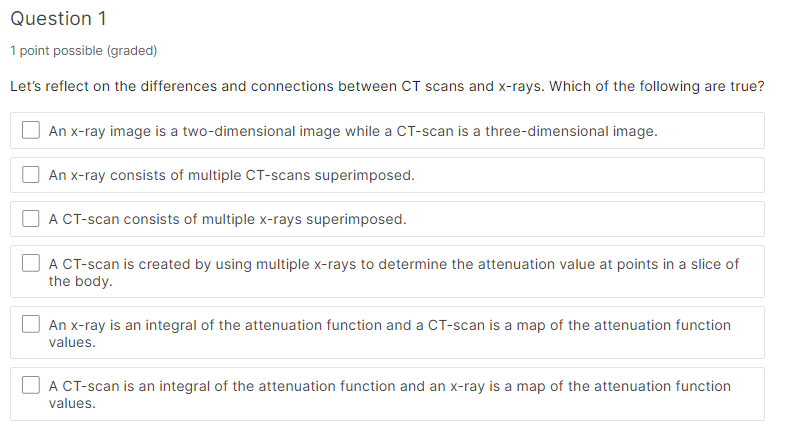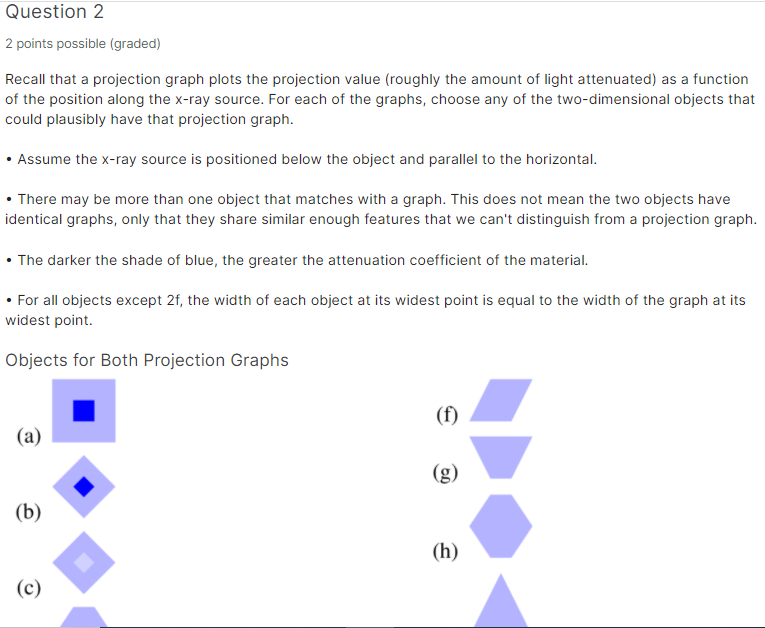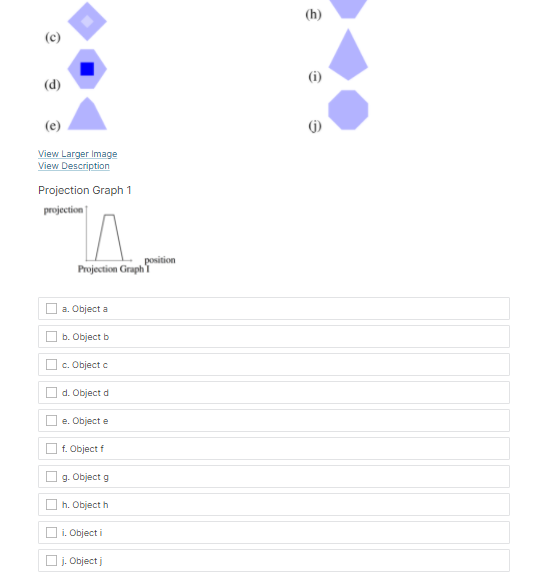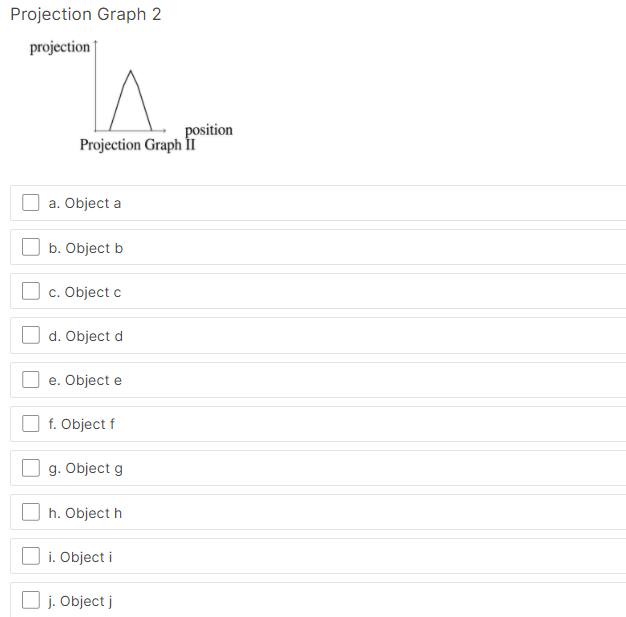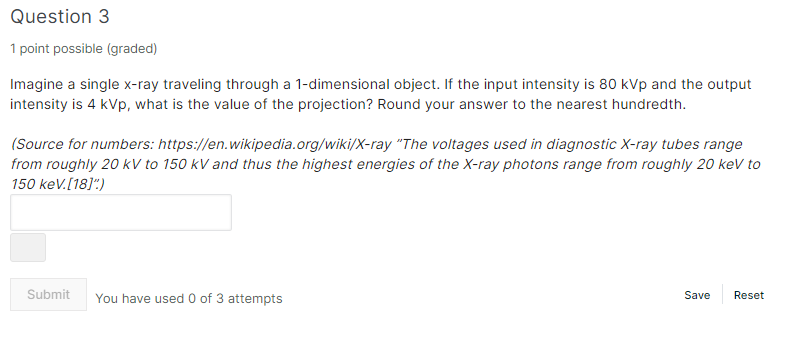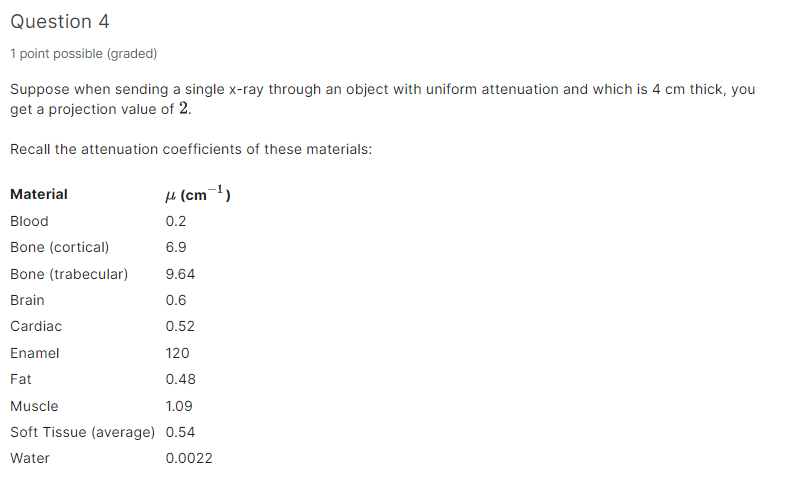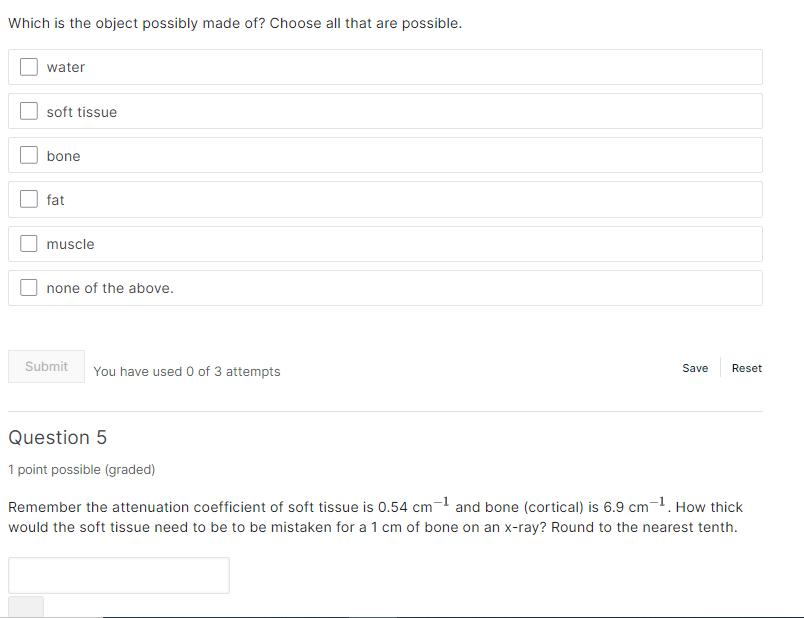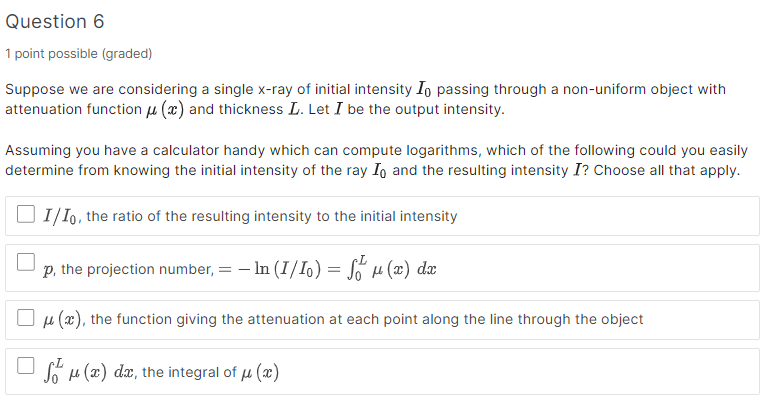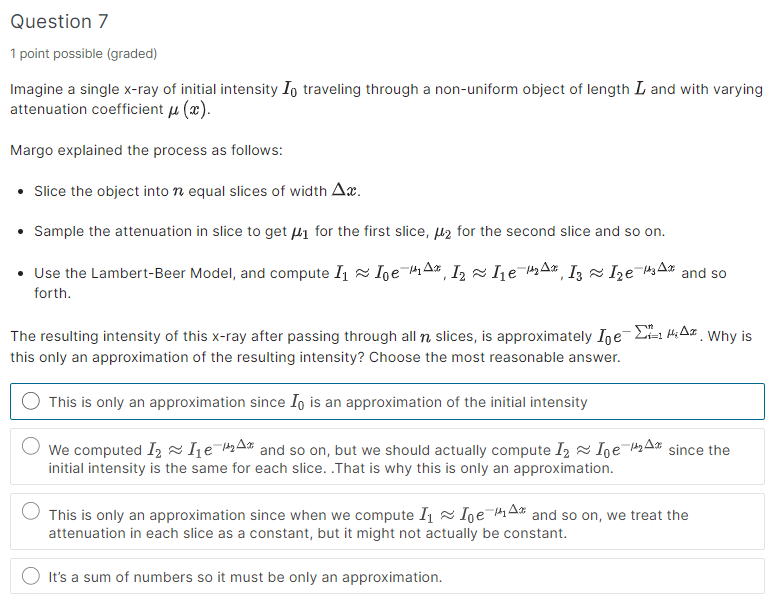Hi expert its mathematics and medical imaging
Question 1 1 point possible [gradec Let's reflect on the differences and connections between CT scans and xravs. Which of the following are true? E] An xrav image is a twodimensional image while a lIETscan is a threedimensional image. CI An xrav consists of multiple CTscans superimposed. El A l[ITscan consists of multiple xravs superimposed. E] A l[ITscan is created by using multiple xravs to determine the attenuation value at points in a slice of the body. E] An xrav is an integral of the attenuation function and a CTscan is a map of the attenuation function values. D A l[ITscan is an integral of the attenuation function and an xrav is a map of the attenuation function values. Question 2 2 points possible [graded] Recall that a projection graph plots the projection yalue [roughly the amount of light attenuated} as a function of the position along the xray source. For each of the graphs. choose any of the twodimensional objects that could plausibly have that projection graph. - Assume the xray source is positioned below the object and parallel to the horizontal. - There may be more than one object that matches with a graph. This does not mean the two objects have identical graphs] only that they share similar enough features that we can't distinguish from a projection graph. - The darker the shade of blue, the greater the attenuation coefficient of the material. - For all objects except 2f, the width of each object at its widest point is equal to the width of the graph at its widest point. Objects for Both Projection Graphs ..) m I (s) ' (b) (h) {c} (h) (c) (i) (d) (e) View Larger Image View Description Projection Graph 1 projection position Projection Graph i a. Object a b. Object b c. Object c d. Object d We. Object e If. Object f g. Object g Oh. Object h i. Object i j. Object jProjection Graph 2 projection position Projection Graph II a. Object a b. Object b c. Object c d. Object d e. Object e If. Object f g. Object g h. Object h i. Object i j. Object jQuestion 3 1 point possible (graded) Imagine a single x-ray traveling through a 1-dimensional object. If the input intensity is 80 kVp and the output intensity is 4 kVp, what is the value of the projection? Round your answer to the nearest hundredth. (Source for numbers: https://en. wikipedia.org/wiki/X-ray "The voltages used in diagnostic X-ray tubes range from roughly 20 KV to 150 KV and thus the highest energies of the X-ray photons range from roughly 20 kev to 150 kev.[18]") Submit You have used 0 of 3 attempts Save ResetQuestion 4 1 point possible {graded} Suppose when sending a single titray through an object with uniform attenuation and which is 4 cm thick, you get a projection 1tralue of 2. Recall the attenuation coefficients of these materials: Material p, {cm1} Blood 0.2 Bone [cortical] 6.9 Bone {traheculari 9.64 Brain (1.5 Cardiac 0.52 Enamel 120 Fat (1.113 Muscle "IDS Soft Tissue {average} (1.54 Water 0.0022 1Which is the object possiblyr made of? lIllhoose all that are possible. E] water E] soft tissue D muscle D none of the above. Submit You have used Ci of 3 attempts 53"\" \"93\" Question 5 1 point possible [graded} Remember the attenuation coefficient of soft tissue is 0.54 cm'1 and bone {cortical} is 6.9 cm'l'. How thick Iwould the soft tissue need to be to be mistaken fora 1 cm of bone on an xray? Round to the nearest tenth. Question 5 1 point possible [graded} Suppose we are considering a single xray of initial intensity In. passing through a nonuniform object with attenuation function y. {to} and thickness L. Let I be the output intensity. Assuming you have a calculator handy which can compute logarithms, which of the following could you easily determine from knowing the initial intensity of the ray In and the resulting intensity I? Choose all that apply. D If-I- the ratio of the resulting intensity to the initial intensity D p. the projection number] = 1u{I;"Ig} = EL pfm] do: a p. [o] the function giving the attenuation at each point along the line through the object D f: \"(3) do. the integral ofps] Question ? 1 point possible [greded} Imagine a single xray of initial intensity In. traveling through a nonuniform object of length L and with yarying attenuation coefficient :1. {so}. Margo explained the process as follows: - Slice the object into n. equal slices of width m. - Sample the attenuation in slice to getpu for the first slice. #2 for the second slice and so on. - Use the LambertBeer Model. and compute 1'1 F5 Inc\"153,12 F5 lie"'35\
